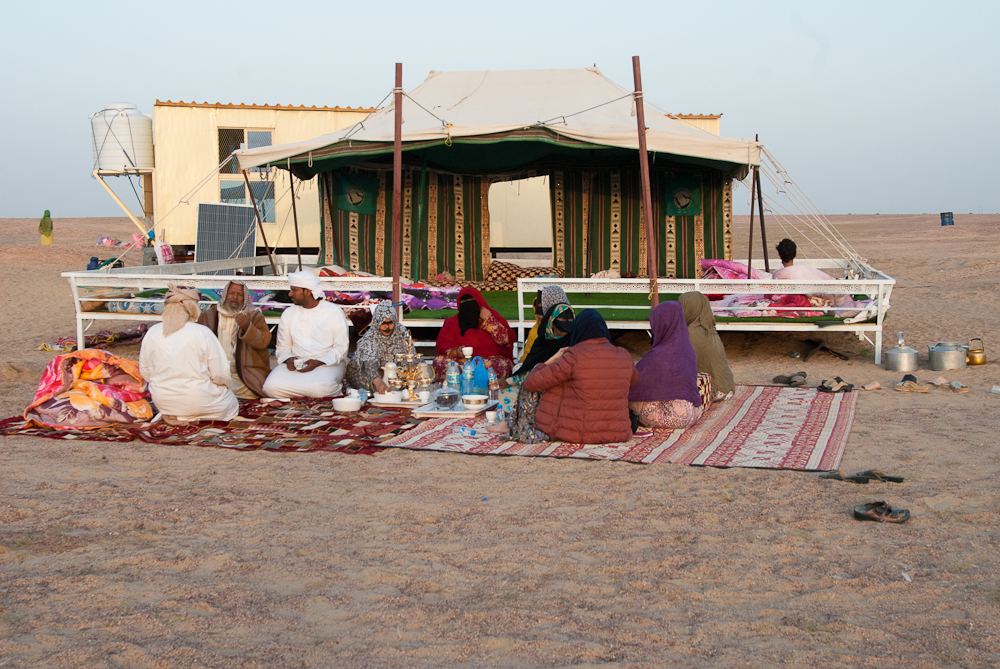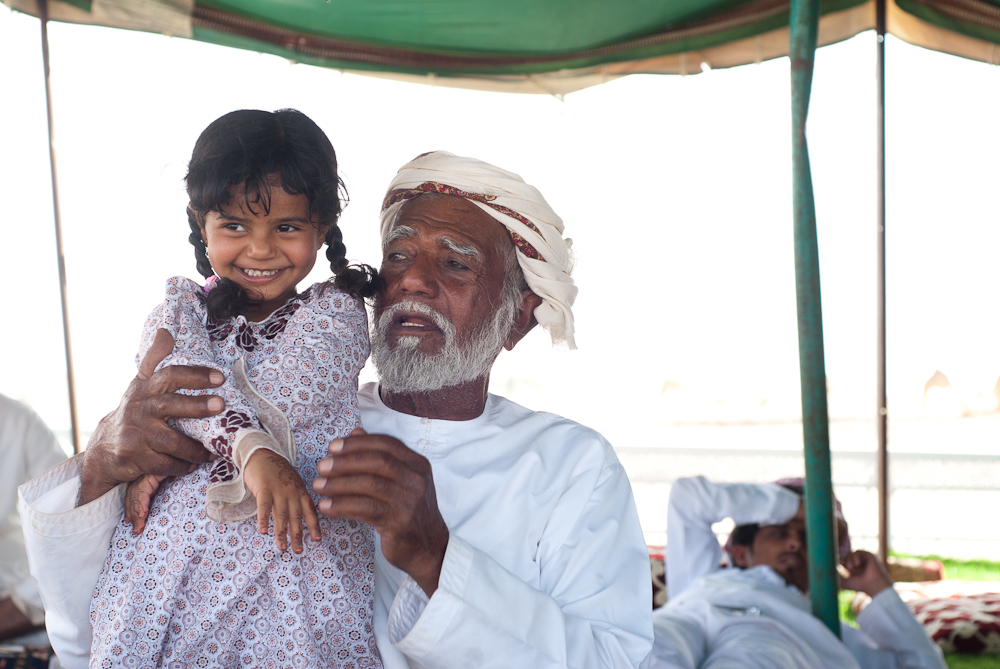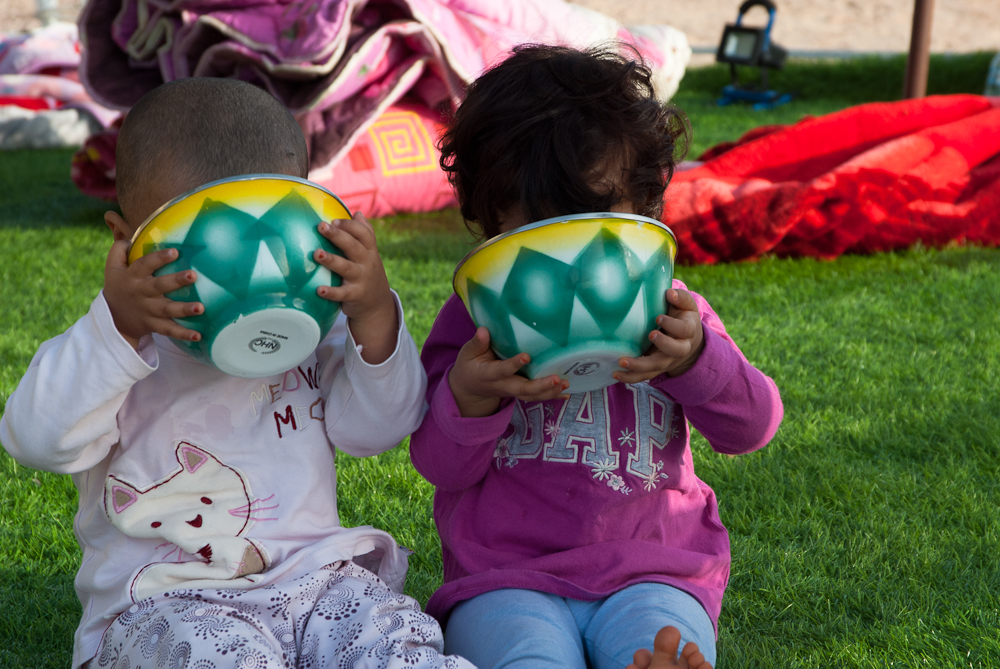The Pace of Change
The Harasiis tribe of the Jiddat il Harasiis and their temporary camel camps
Professor Dawn Chatty
The Harasiis tribe is a camel and goat herding community of about 5,000 occupying the central desert of Oman, the Jiddat il Harasiis a name formally given to this territory after some contestation and arbitration by Bertram Thomas between them and another tribe in the 1930s.
I have been working with the Harasiis tribe of Oman since 1978 when I first came across them on a medical mission across Oman’s central desert to locate some lapsed TB patients from the Salalah hospital in Dhofar. One patient was clearly from the Harasiis tribe and my companions, the doctor in charge of rural health services in Salalah and his wife, had invited me to join them. Somewhere near Wadi bu Mudhabi we came across his family who were all preparing to attend a wedding. I previously worked with herding societies in the semi-arid lands of Syria and Lebanon but had never experienced an aridity and vast emptiness as here in the Jiddat.

A year later I was back, but this time heading a United Nations project to extend government services (health, education, and welfare) to the inhabitants of the Jiddat il Harasiis. With the close cooperation of the Minister of Health, the Minister of Education and the Minister of Social Affairs and Labour and the support of the Sultan’s Armed Forces (for ‘Iron Rations’, transport and seconded SRN nurse-midwives), as well as the Petroleum Development Oman operations room for communications, I began my work with the Harasiis tribe. Over two years, my team of five – three Omani, and two American Peace Corps workers – were able to establish mobile health care, support a four-bedded mini hospital, set up a weekly boarding school for boys and a day school for girls, establish a branch of the Ministry of Social Affairs and Labour at the Haima Tribal Centre, as well as a veterinary service. By 1984 I was able to hand over this project to my Omani counterparts, but I had become hooked. I continued to visit the Jiddat and the families I had come to know so well year in and year out. And so, I was able to observe changes, and adaptations, some were expected and others not.

Early in my work I had noted that all Harasiis households had vehicles and used them to move their families, possessions, and herds from one camping site to another maybe three or four times a year. Over time I realized that some households began to move less – generally between a fixed place in one of the government social housing compounds at Haima, with enclosures for their goats and a temporary camp where most of the camel herds were kept. I realize that individuals were actually moving around a lot - but in a more predictable fashion – between house and camp. I stopped calling them ‘nomadic’ and instead referred to them as mobile herders. Although the camel had lost some of its functionality, it was still highly prized for racing and for its milk (these as well as the goats are basically ‘nanny’ herds), and most families aimed to have herds of about 25 camels with 5-6 lactating at all time. The problem nowadays was access to the milk. And that required constant to-ing and fro-ing between these mobile camel camps (‘azbah (pl. ‘azab), and their homes in compounds near schools and other government services.
My last trip to al Wusta was in 2018. I had telephoned ahead using WhatApp – every Harasiis has a smart phone – to tell them I was in the country and heading out to Haima to visit them. What time did I think I would arrive, they asked? Knowing it was generally a 5-6-hour drive from Muscat, I suggested a time around mid-day. Three hours into my drive and well past the Adam turnoff, they called again and told me to come to their ‘azbah’. “Where is that now?” I asked. My host said “Just go to Qarn al Alam and then turn right on the dirt track and continue until you see a petrol pump. There will be a car waiting for you there to bring you to us”. With some trepidation, I did as I was told and reached the ‘azbah of my host without incident. What a surprise awaited me. In the past, a temporary camp was just that; some tarpaulin thrown over a tree, or some fencing erected around some posts, a canvas tent perhaps. But here, in 2018, it consisted of a tented open raised platform, the seating area of which was covered in artificial grass, and behind several porta-cabins with solar panels and generators for sleeping, and storing food and utensils. Adjacent to these units were several lactating camels and their young, contained within a wire fencing enclosure. As it was a weekend, there were many family members present as well as numerous guests. The tented platform was full of men, boys, women and girls. This was a family outing reconnecting everyone to their desert, and their camels.

* Special thanks and credit to Jaanika Vider for her photography